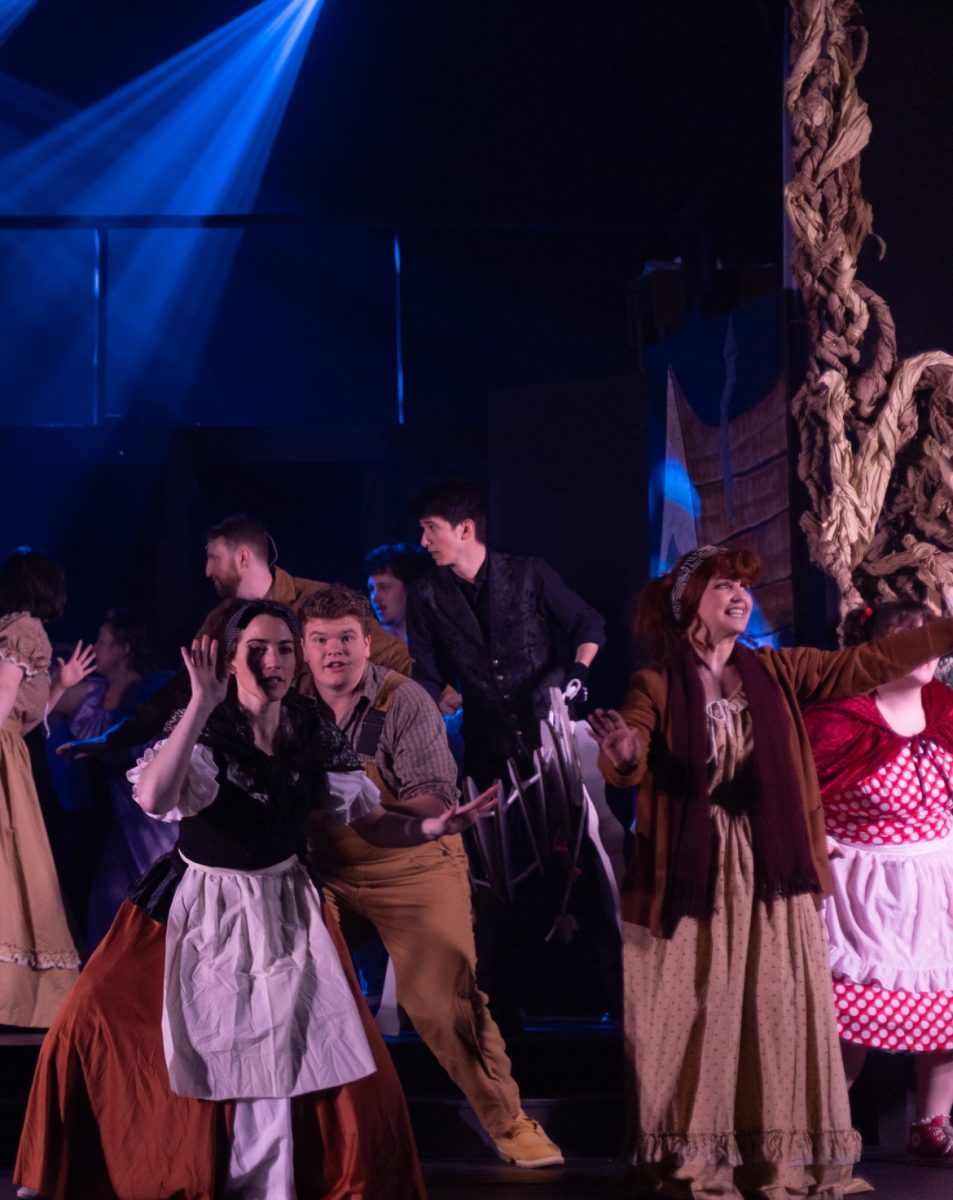 Conversation overlap in an unintelligible heap of sound, enveloping Love Auditorium as the audience waits for the opening of “Into the Woods,” a satire of childhood fairytales made possible by the stage management class.
Conversation overlap in an unintelligible heap of sound, enveloping Love Auditorium as the audience waits for the opening of “Into the Woods,” a satire of childhood fairytales made possible by the stage management class.
Each character is an essential part to the plot, but the characters most fundamental to the development of the story are the Baker and his wife. They want to have a kid. The Witch overhears this and will grant them their wish if they obtain various items. The only way to find these items is to go into the woods.
The other characters have various reasons for going into the woods and they all eventually aid, willingly or not, the two bakers in their quest to have a child. Throughout the play, the actors delivered jokes with more adult innuendos, adding a subtle undertone. Never throughout the play did a joke fall short. I was in a continuous state of laughter.
The two princes of Cinderella and Rapunzel contribute greatly to that humor. They poke fun at princely love, jerking their heads every which way as if searching for their lost beauties, needlessly falling to the floor.
The stage was static because of the low person count. The characters would move the setting when needed, but this didn’t pose a problem to the audience. I wasn’t annoyed when props were carried out or how the background never changed, the acting moved fluidly around those limitations.
At times, there was a pause in story because of a pause in music. I soon disregarded the few awkward moments, and the tale progressed. I caught myself up in the story and overlooked any flaws, making the play seemingly flawless.
Yes, there were technical downfalls, but that made the act all the more real and enjoyable. I found myself chuckling at things left in elementary school and dark humor I had never understood before. It consumed my attention and left me yearning for more.
Other than stage movement and sound delay, any possible mistakes made by the actors were expressed as intentional add-ons to the comedy.
Besides the overall hilarity of the play, there were moments when the audience had to face the reality of childhood.
Rapunzel and the Witch exemplified this the most. It was a masterful show of motherly love, willing her child, Rapunzel, to stay, only to be rejected for her daughter’s lover, the Prince.
Characters grew up and left the comfort of their lives to face the woods, the unknown and the prospect of chasing their desires.
All in all, amidst the comedy and specks of realism within “Into the Woods,” it did what all plays should; deliver to the audience an experience like no other, suspending what we’ve been used to and pointing out its flaws and truths whether it be through comedy or subtle symbol.





